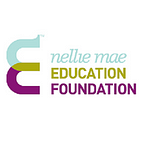Safely Resuming In-Person Schooling Requires Creativity and Flexibility
Guest Post from Noe Medina, Education Policy Research
There has been considerable attention paid recently to the re-opening of schools in the fall. These discussions have emphasized the learning losses that students have experienced due to school closures in the spring, particularly among students who were already struggling. They cited concerns from pediatricians about delays in social development that have already occurred among younger children and could continue to grow. They talked about the impact on the economy and family finances for parents who could not get back to work without someplace safe to send their children.
All of this makes sense and provides very compelling reasons for action. What doesn’t make sense are the actions being proposed for the fall. Too much of the discussion has focused on the school buildings themselves and the mechanics of the re-opening rather than on the real purpose of these actions — to safely foster high-quality, in-person learning for all our children for as long as possible. The result has been a profound lack of creativity and a fairly narrow set of solutions, particularly in light of the resurgence of the coronavirus in so many states and communities across the country.
The problem starts with the language that is being used. Instead of talking about re-opening schools, we should be focusing on safely resuming in-person schooling in the fall and beyond. Too many people have concluded that now is not the time to restructuring schooling. Because of the pandemic, they claim that we must focus on the basics of re-opening school. That is exactly wrong. Now is time to be as creative and flexible as possible and to explore ALL options.
In thinking about safely resuming in-person schooling, communities should begin by asking the following questions:
· How can we involve other spaces in the community in addition to school buildings (such as public libraries, Boys and Girls Clubs, YMCAs and YWCAs, daycares, and museums) to provide in-person schooling to more our students more of the time each week?
· How can we enlist others in our community (including youth workers, social service providers, daycare staff, government agency employees, community volunteers, and parents) to work with teachers and other school staff to foster more in-person schooling?
· How can we use distance learning methods to support greater in-person schooling for our students rather than just isolated, at-home learning?
· How can we use this situation to foster better and more equitable schooling opportunities for all students rather than seeing the existing inequities widen, particularly for students of color?
To safely resume in-person schooling for all students in the fall and to sustain that schooling throughout the school year, we must strengthen and expand the connections and authentic cooperation between schools, community agencies, businesses, and families so that this becomes a community-wide imperative rather than just the responsibility of teachers and school districts. Federal and state governments must provide sufficient funding and practical guidance to communities to ensure that this cooperation is successful.
Early examples of these cooperative efforts have already begun to emerge. In response to the pandemic and the closing of schools, several Maine nonprofit organizations formed Community Learning for Maine in a grassroots effort to respond to these challenges. The group has grown in the last few months to include almost one hundred Maine-based organizations including nonprofits, businesses, public agencies, and higher education institutions. Drawing on the collective knowledge and creativity of these organizations, the group has provided online resources, support, and networking opportunities for students, families, and teachers during these difficult times. This has laid the groundwork for further collaboration around how to support communities and schools as they develop plans for the fall. Efforts such as Community Learning for Maine can provide both inspiration and concrete lessons for others in our region and around the country.
This WILL be hard work. It will require resources and time from many people in our communities. More important, it will require all of us, including educators, to approach schooling differently. We must accept that one size does NOT fit all. Instead, the needs of different students and the changing conditions in each community will demand flexible responses. Communities must embrace creativity as a necessity rather than a luxury. We must recognize that EVERYONE in our communities has a stake in the successful resumption of in-person schooling for students in the fall and beyond.
Noe Medina lives in Massachusetts and has dedicated his career to promoting high-quality educational services for all students, particularly those that have been traditionally underserved by the public school system.
